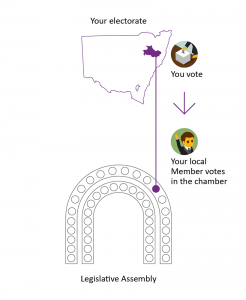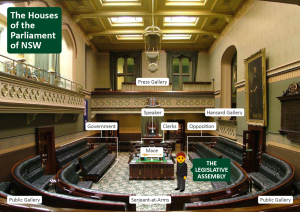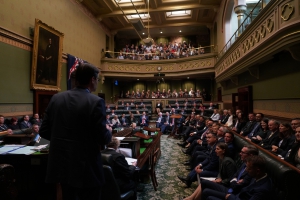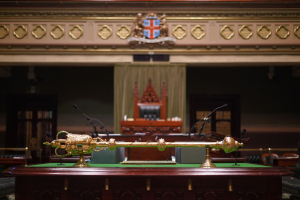
This week the Legislative Assembly meets for the first time in 2021.
The Legislative Assembly or Lower House is decorated in green and forms one half of our two house Parliament!

What Does The Lower House Do?
The main roles of Legislative Assembly are:
To represent the people
There are 93 members of Parliament (MPs), each representing one of the 93 electorates in the State. Elections must be held every 4 years and members of the Legislative Assembly are elected for a 4 year term.

To form the Government for New South Wales
The leader of the party which commands a majority in the Legislative Assembly after an election is commissioned by the Governor to form a Government and become Premier. The Ministers are Members of Parliament chosen from that party.
To make laws
The Parliament makes laws by debating bills in each House, which, if agreed to by both Houses, are then sent to the Governor for assent.
To keep the Government accountable to the people of New South Wales
Members ask questions of Ministers at Question Time, raise concerns or express opinions in parliamentary speeches, participate in parliamentary committees to inquire into issues, present petitions from their constituents to Parliament.
Who Sits Where?

In the Westminster system the Government is formed by the political party that wins the majority of seats in the lower house. The leader of that party is commissioned by the Governor to form the Government. Some members are chosen from the Government to perform special roles as Ministers. Ministers sit on the front bench to the right hand side of the Speaker. Members of the Government who are not Ministers sit on the back bench and are called backbenchers.
The Opposition sits on the left hand side of the Speaker. Shadow Ministers sit opposite them. Members of the Opposition who are not Shadow Ministers sit on the back bench and are also called backbenchers.
Members of minor parties or independents also sit to the left of the Speaker but near the back of the chamber in front of the public galleries.
The Speaker presides over the parliamentary sittings of this chamber. Their role is similar to the chairperson of a meeting who ensures that the rules of debate are followed so that members can represent their constituents. Pictured is the current Speaker Jonathan O’Dea addressing the Chamber during the Opening of Parliament in 2019.

The Speaker is assisted by the Clerks and the Serjeant-at-Arms who are not elected representatives but expert public servants.
The Mace sits on the table symbolising the authority of the Speaker and of the Parliament to make decisions for the people of NSW.

Parliamentary sittings are live streamed on the Parliament’s website. They are also recorded by Hansard reporters and the media can attend and report on proceedings from the press gallery.
Syllabus Links
Understanding the Legislative Assembly’s role in the parliamentary process features in all three areas of the syllabus that focus on Parliament.
- Year 5 & 6 Role of Parliament
- Year 10 Commerce Parliament and Government
- Year 11 Role and Structure of Parliament



